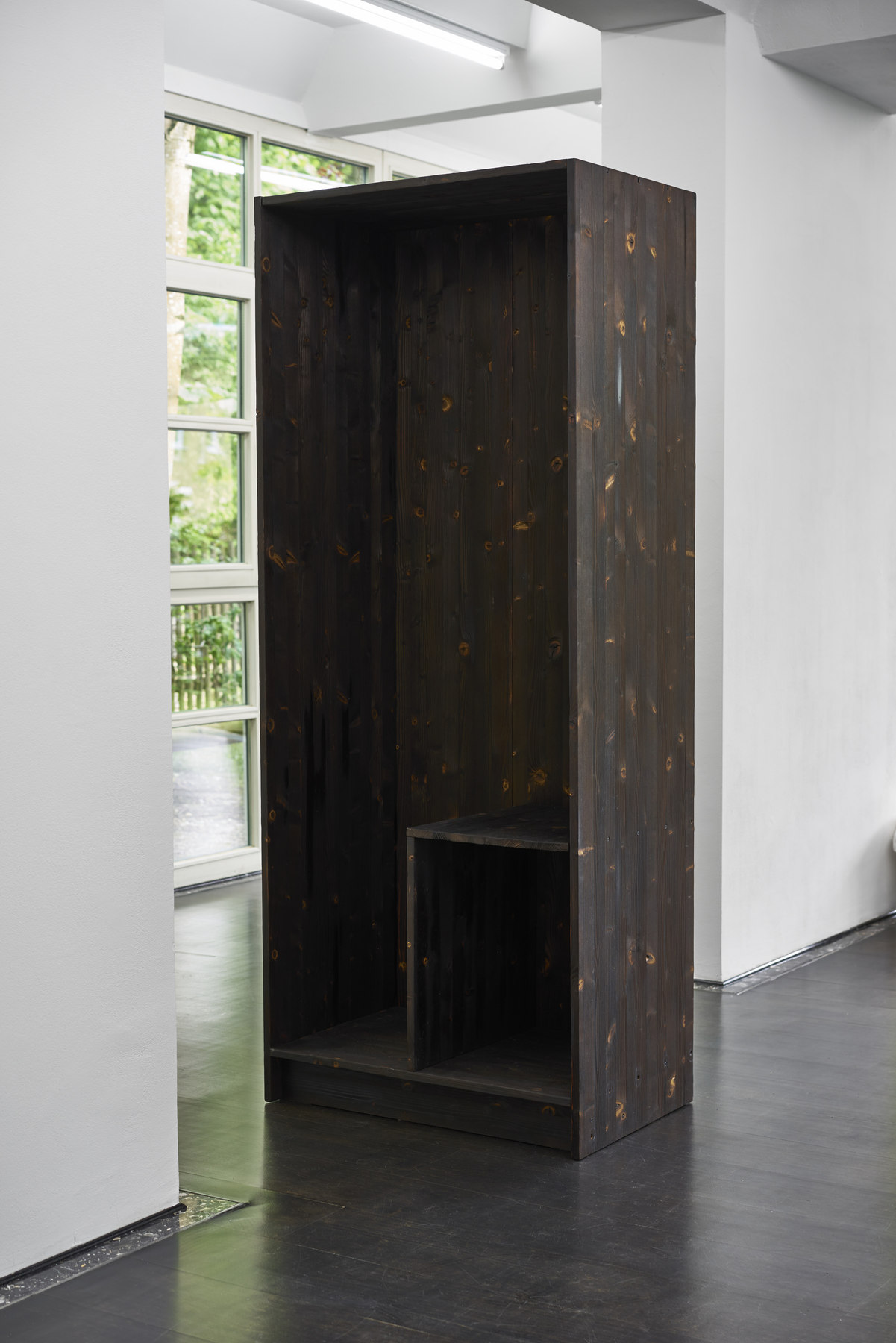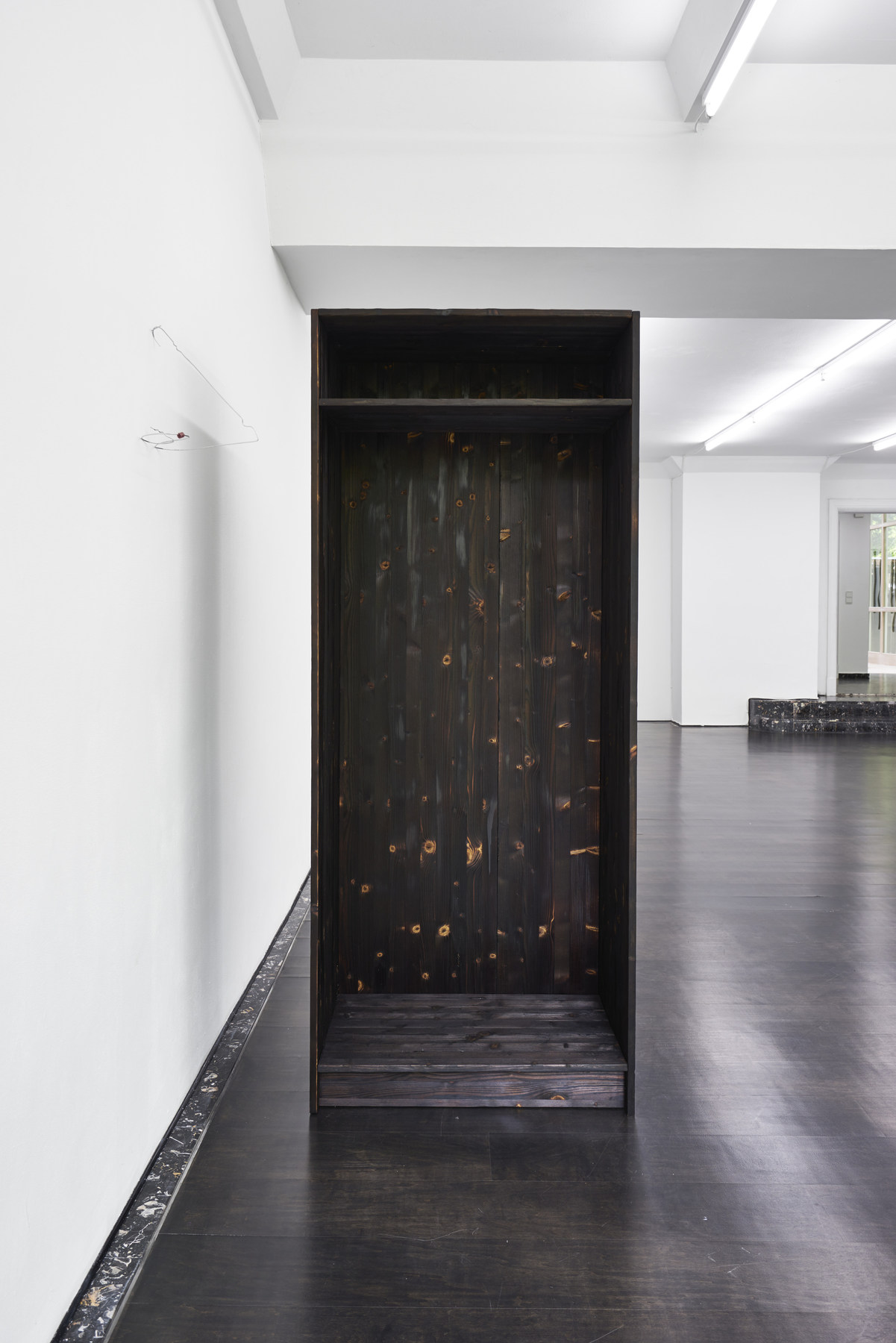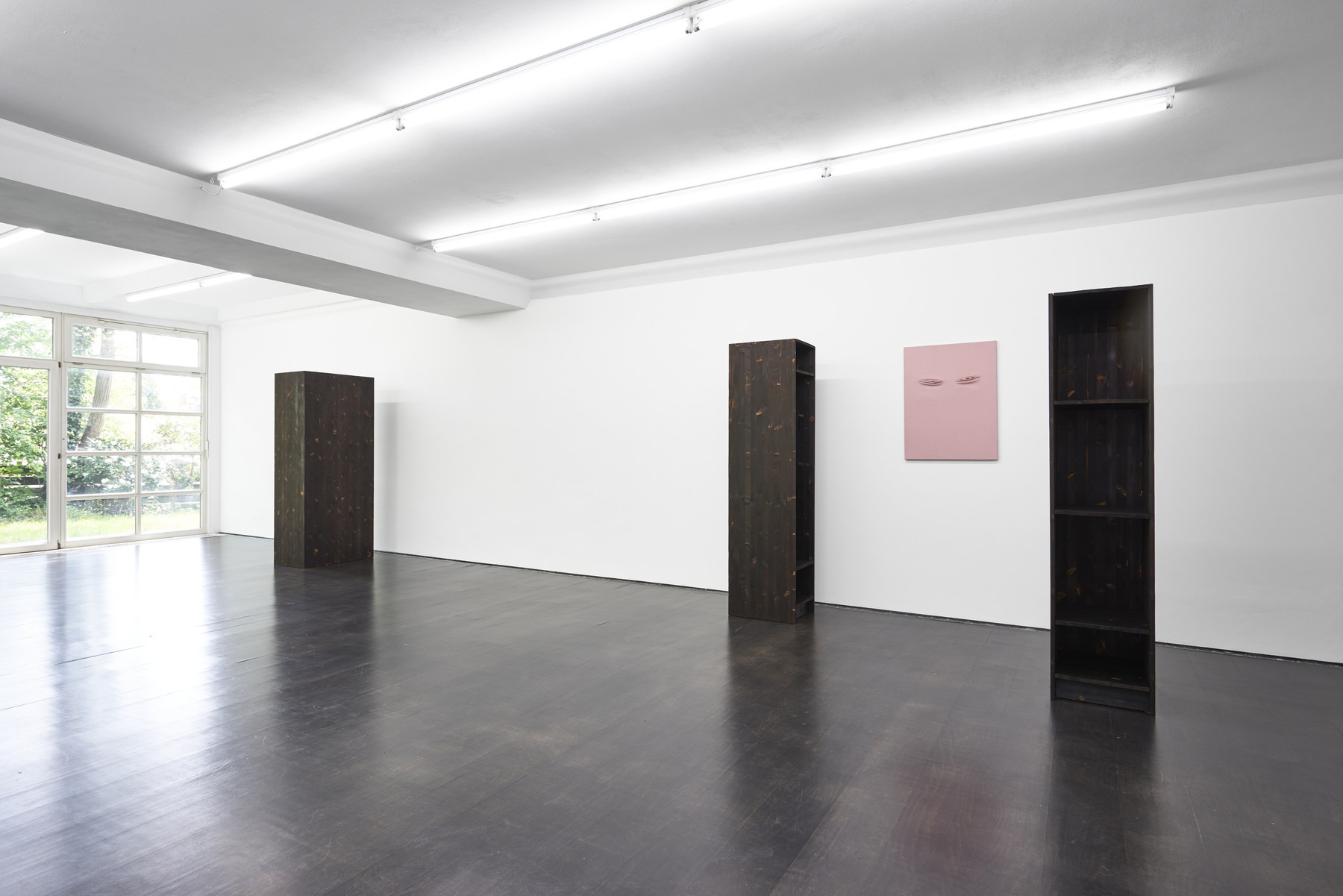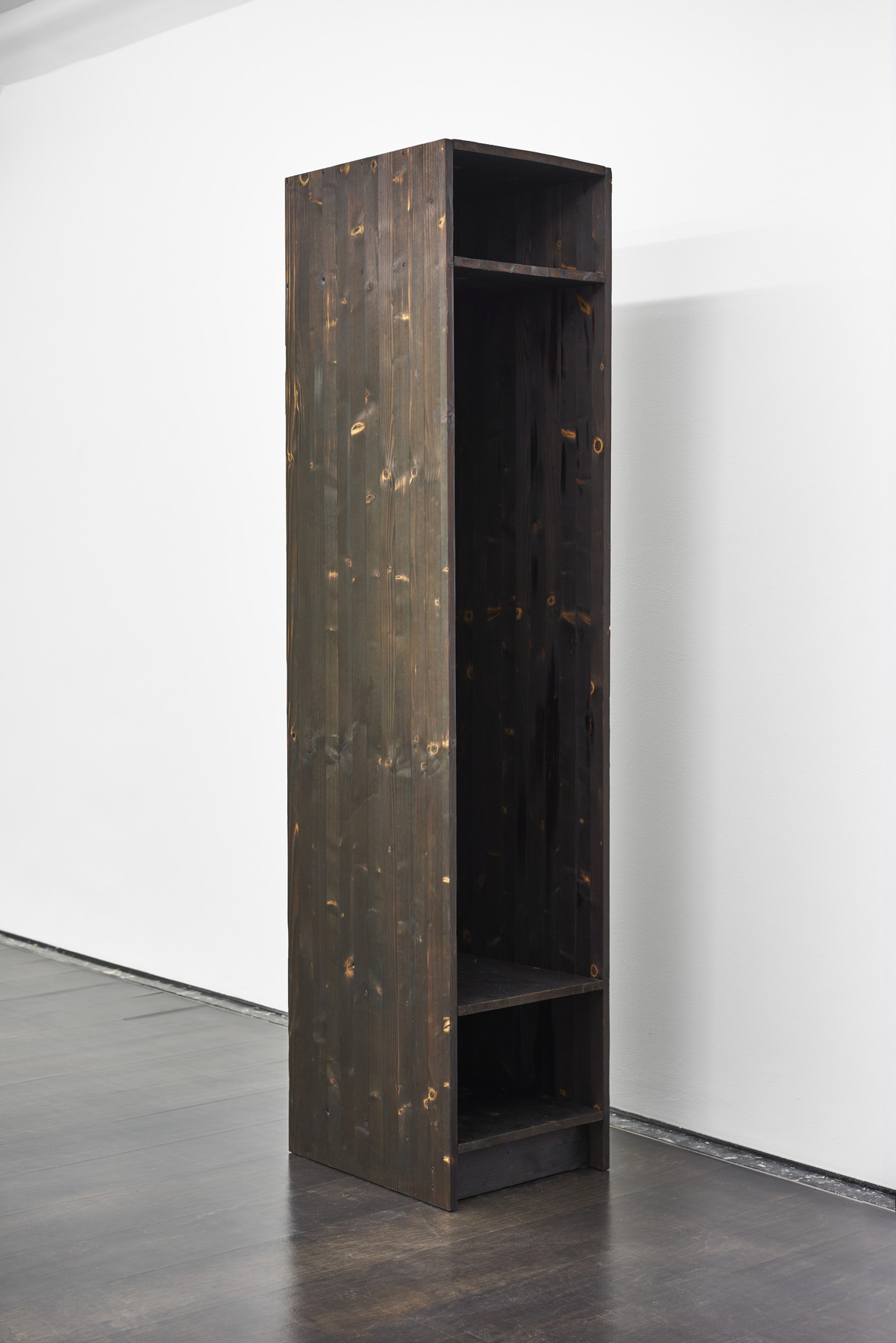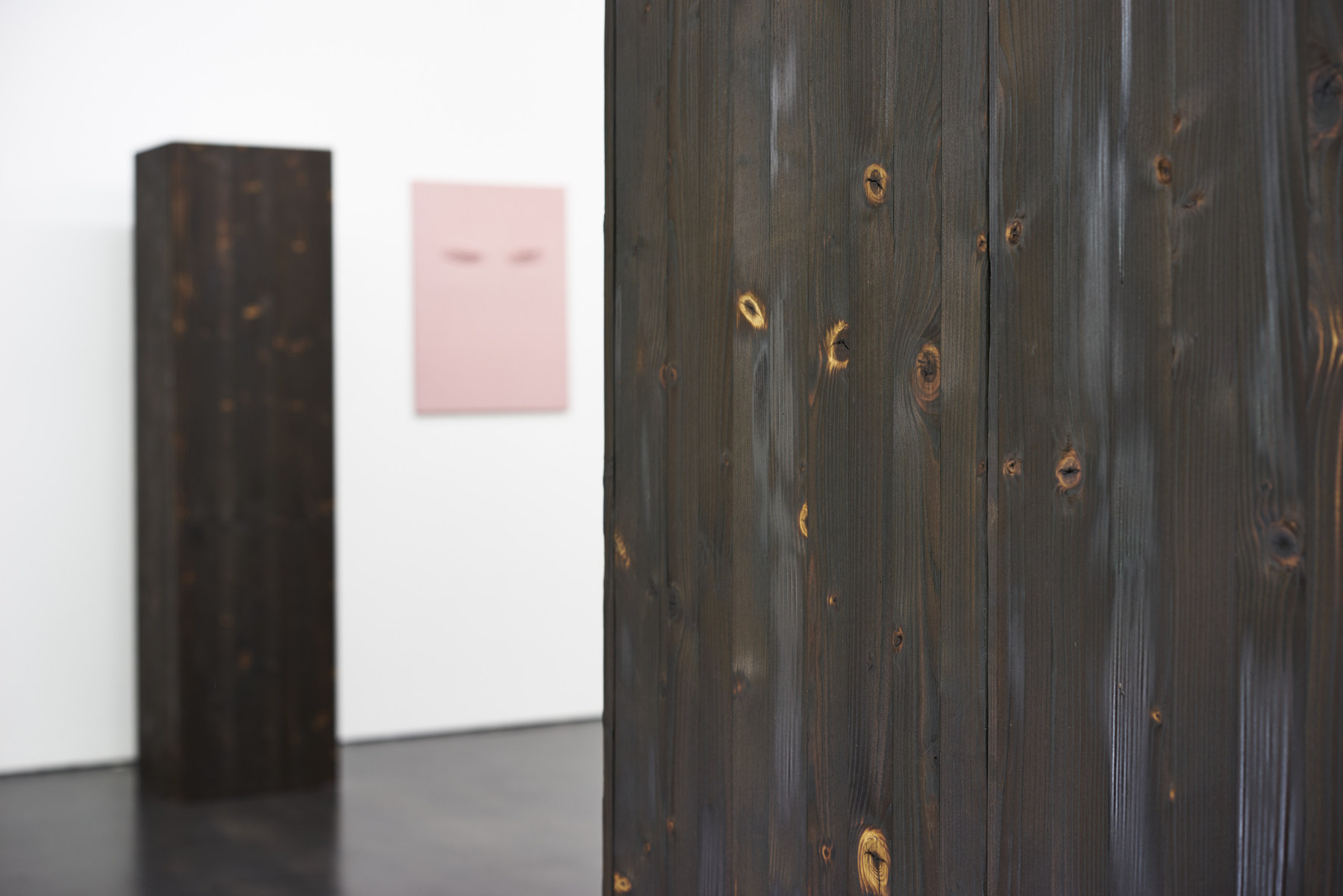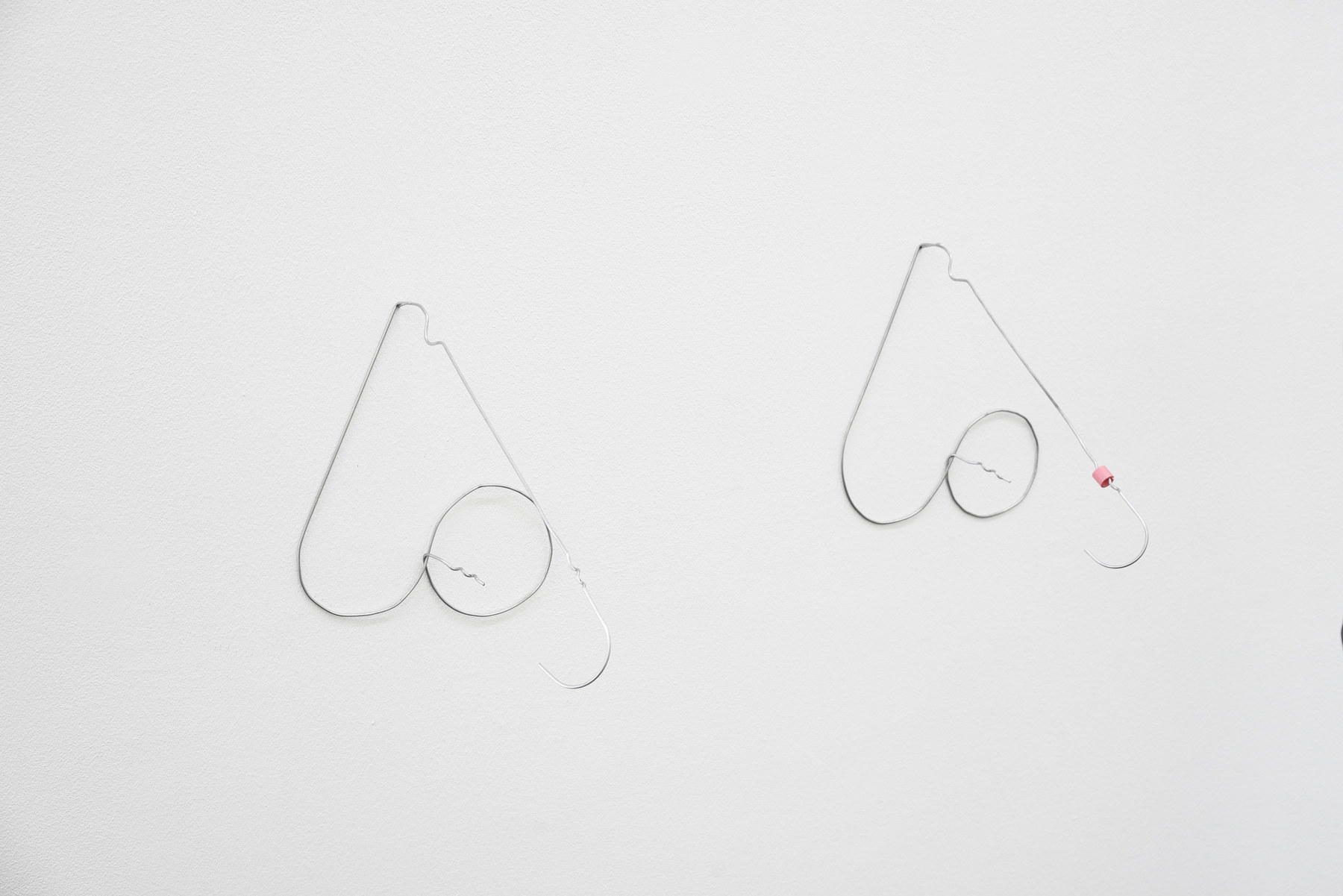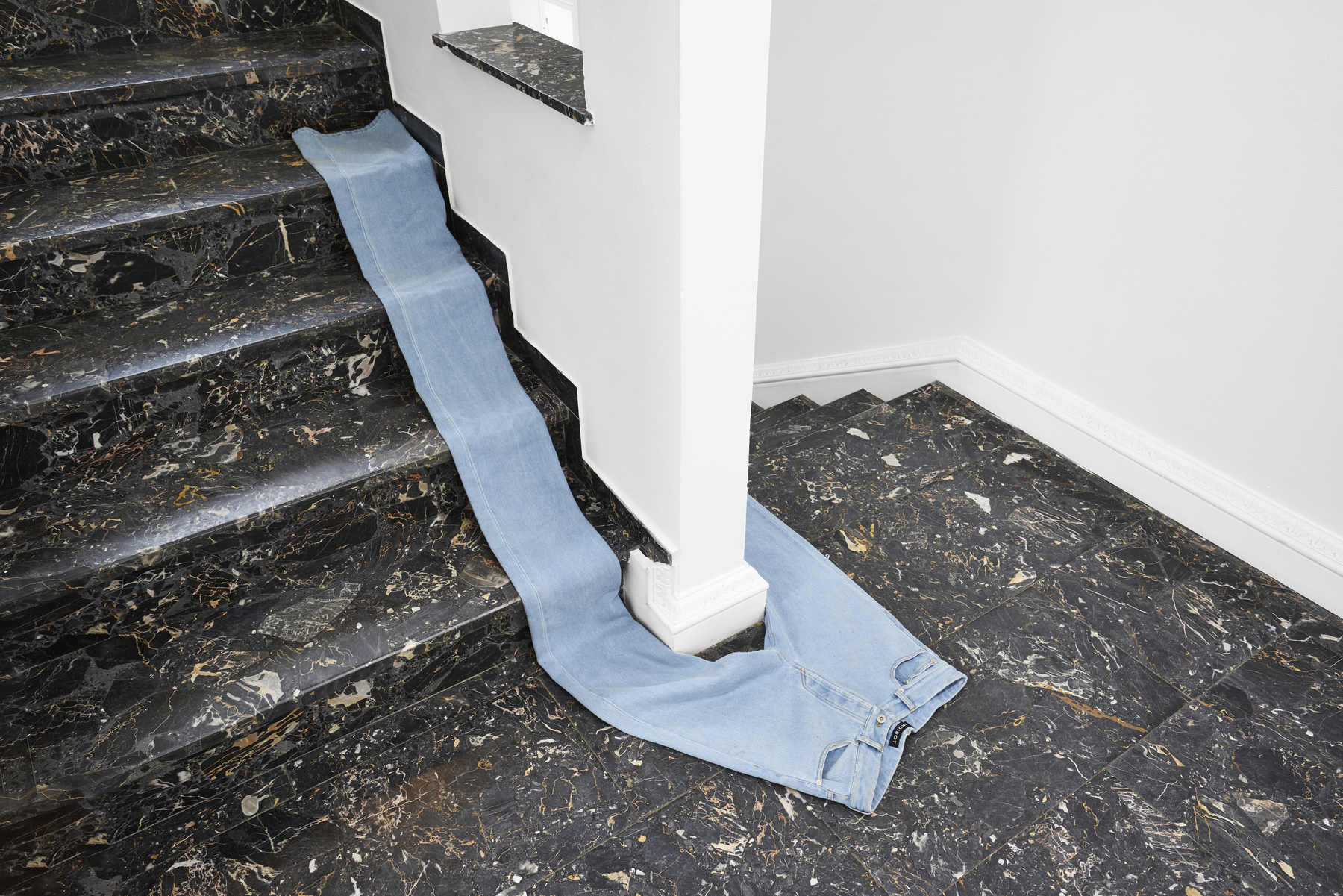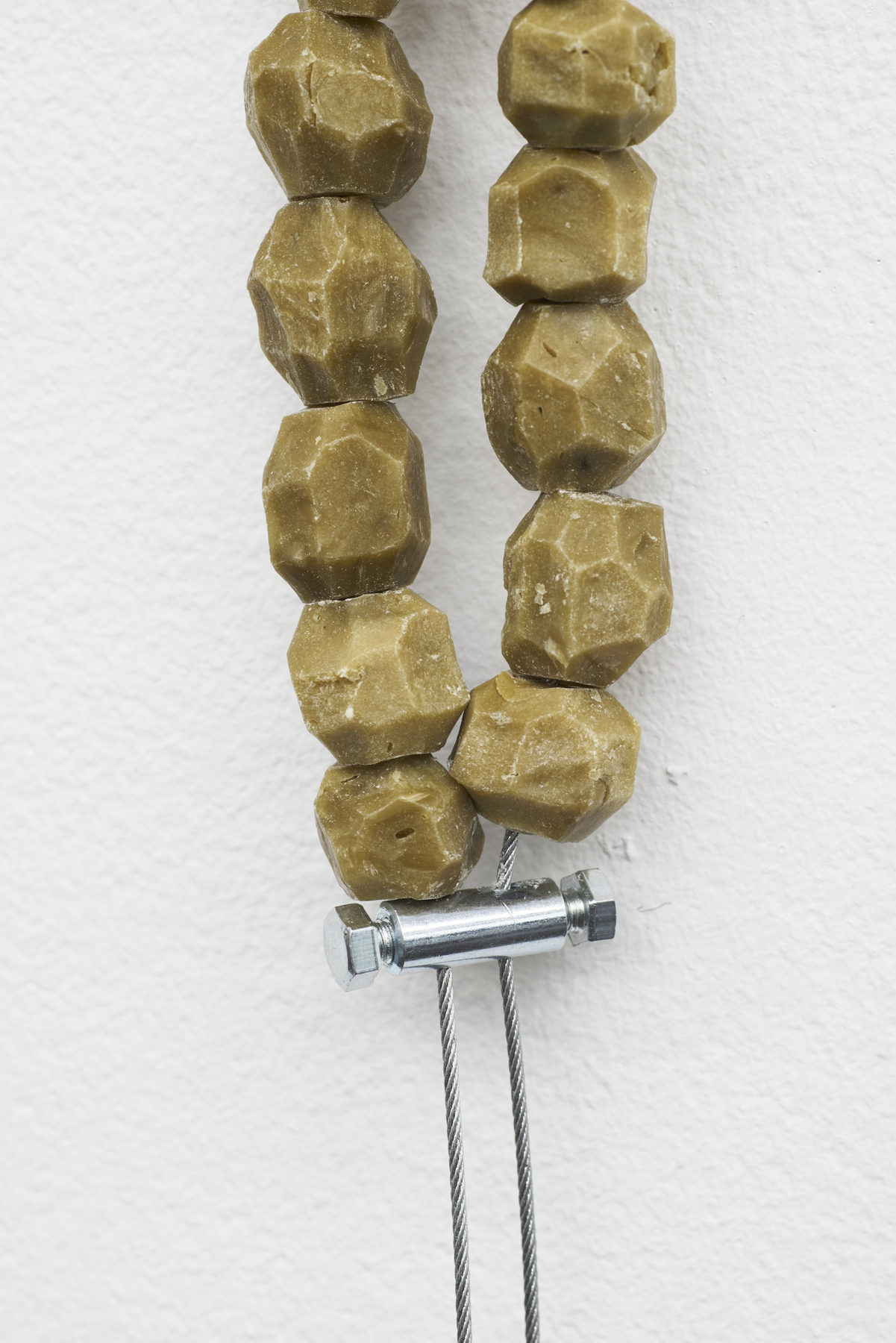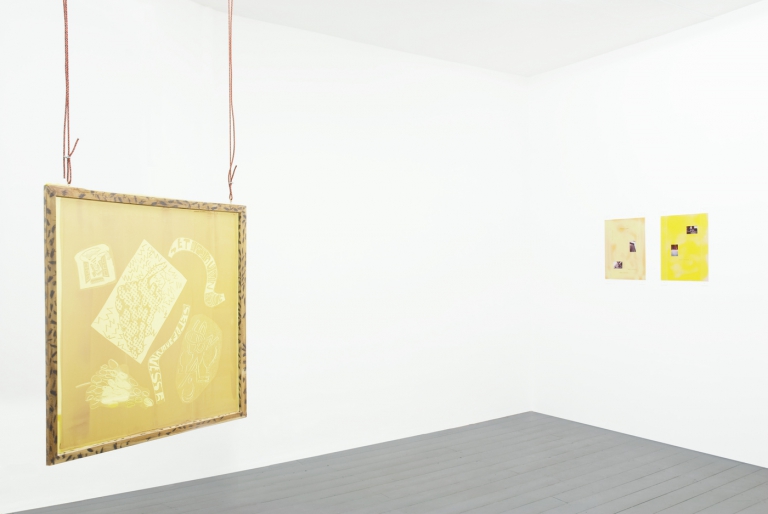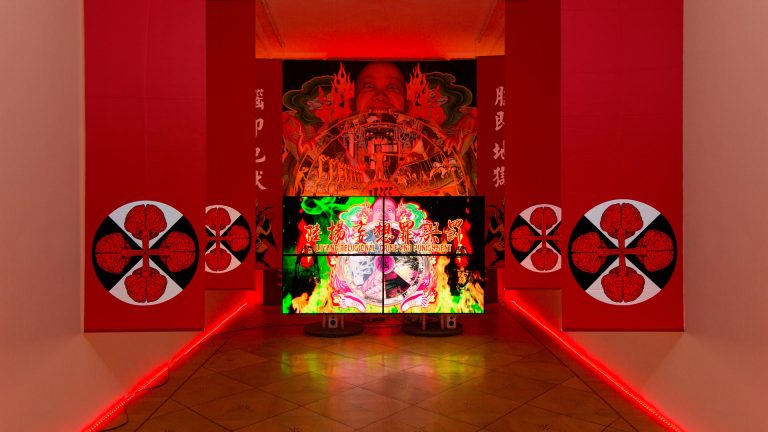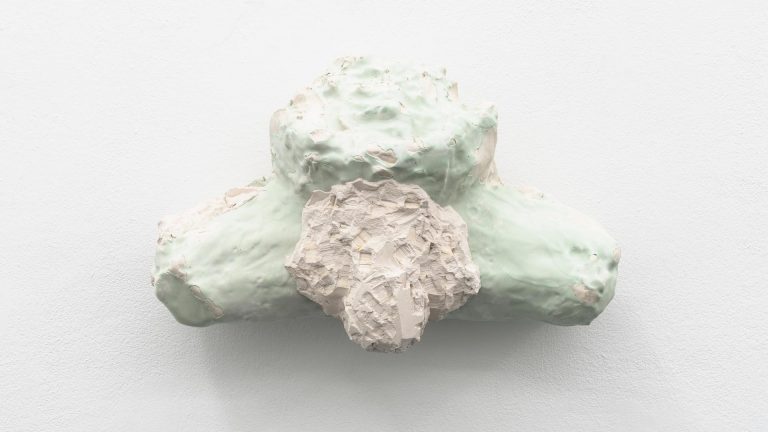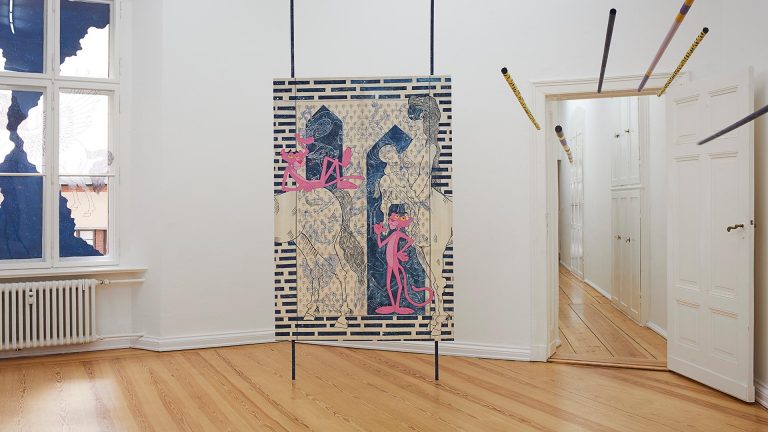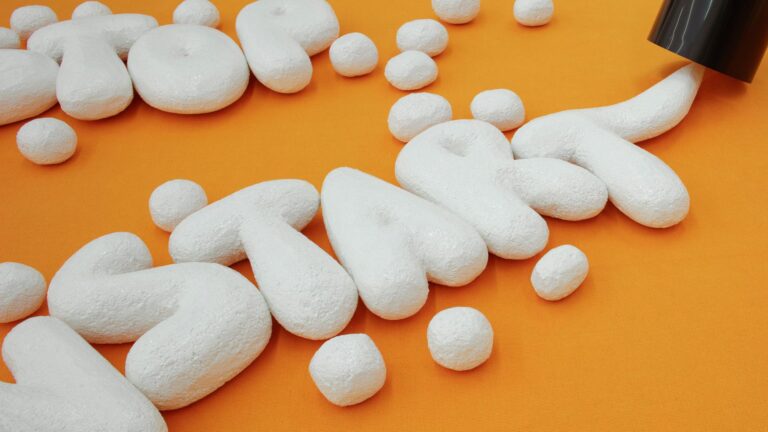Artist: Davide Stucchi
Venue: Deborah Schamoni, Munich, Germany
Date: May 6 – July 8, 2017
Photography: Ulrich Gebert, all images copyright and courtesy of the artist and Deborah Schamoni, Munich
A prose on ephemerality.
It takes countless months to conceive and set up a fashion collection, whereas its presentation shrinks all efforts down to a fistful of minutes, seconds, instants. Similarly, there is a profound sense of synthesis in the work of Davide Stucchi, starting with the way he decided to concentrate the complexity of his persona in the contact sheet of a mannequin. Height, shoulders, chest, waist, shoes, hair, eyes. What’s behind it?
An obsession with both corporeality and eternity is embedded in the process of creating garments, in how textiles and shapes enfold our mortal body, a mixture of archaeology and innovation. Fabrics orchestrated to protect, reference and retain a determined social identity, a coding, a language. Protecting to be protected. Perhaps the artist wants to take on the responsibility of returning clothes to a purer form, leaving them free to rest in a corner: hanging leaves of fibres opposing the obstinate coverage of the epidermal tissues, returning the body to its original nakedness.
The backstage of the mind is left unrevealed, though everything hints back to this idea of preparation—the whole environment created by Stucchi becomes a projection of what’s behind the scenes: questioning its own role, validity, and meaningfulness under the limelight. What matters has already happened and is now back in the closet, trying to find the guts to come out, to walk an imaginary runway in an outburst of joyful, infantile folly, to never be forgotten…
Yet that something in the closet still chooses to rest for now. Indeed, it’s too preoccupied with the complexity of walking per se: why walk, how to walk, the rubbing of the clothes against the skin, the rubbing of the skin against the clothes, another skin’s epidermal particles. If nothing really assumes a body, then what’s the point of wearing clothes and, furthermore, to walk in them? Moreover, the point of walking is to go somewhere, not to obtusely pace back and forth. Right? Walkwear is concerned with the consequences of all this moving, coating, brushing, with how the residuals of these organic and synthetic layers end up creating a frottage of souvenirs. The body holds memories of where it once walked, and that is ultimately what must not be lost.
Ephemeral and scenographic, Davide Stucchi’s oeuvre is daring and shy, critical yet occasionally obliging. Works often come in multiples; the same impasto is split like shining pearls of mercury falling from a thermometer. An obstinate tautological process to dissect, transform, recompose, slowly erasing one entity into another, releasing one form into the next. Every soap bead, every spaghetto is a memento rather than a demonstration—to remember the roughness of the artistic process when compared with the delicacy of childish jewellery making, to appreciate the quiet sinuosity and fragility of dried pasta as opposed to the animalistic extravaganza of a cuttlefish spurting ink, (ir)remediably staining transparent waters.
Beauty comes from within but needs to be spread outwards.
-Matilde Cerruti Quara
In the wintergarden of the gallery, Stucchi gives space to the iconic work Desiderando gli Amici (1992), by his artist friend Corrado Levi (Turin, 1936). For this piece, Levi asked his friends to borrow their belts to hang diagonally through a room, altering spatial perception, in a different way for each viewer passing through the work.
Davide Stucchi, Tomorrow is another day, (back), 2017, unsent postcard, 17 x 12 cm
Davide Stucchi, Tomorrow is another day, (front), 2017, unsent postcard, 17 x 12 cm
Davide Stucchi, Heat dispersion (Black Afgano) IV, 2017, burnt wood, 74 x 50 x 191 cm
Davide Stucchi, Naso (Pisello) V, 2017, aluminum hanger, 25 x 19 x 26 cm
Davide Stucchi, Heat dispersion (Black Afgano) IV, 2017, burnt wood, 74 x 50 x 191 cm
Davide Stucchi, Heat dispersion (Black Afgano) IV, (back) 2017, burnt wood, 74 x 50 x 191 cm
Davide Stucchi, Heat dispersion (Black Afgano) I, 2017, burnt wood, 37 x 50 x 191 cm
Davide Stucchi, Heat dispersion (Black Afgano) II, 2017, burnt wood, 37 x 50 x 191 cm
Davide Stucchi, Closed eyes, 2015, denim on canvas, 80.5 x 60.5 x 2 cm
Davide Stucchi, Closed eyes, (detail) 2015, denim on canvas, 80.5 x 60.5 x 2 cm
Davide Stucchi, Heat dispersion (Black Afgano) III, (detail) 2017, burnt wood, 74 x 50 x 191 cm
Davide Stucchi, Naso (Pisello) III and Naso (Pisello) IV, 2017, aluminum hangers, each 25 x 19 x 26 cm
Davide Stucchi, Naso (Pisello) III, 2017, aluminum hanger, 25 x 19 x 26 cm
Davide Stucchi, V135, 2014, tissue paper, 25 x 34 x 42 cm
Davide Stucchi, Heat dispersion (Black Afgano) III, 2017, burnt wood, 74 x 50 x 191 cm
Davide Stucchi, Naso (Pisello) I, 2017, aluminum hanger, 30 x 19 x 22 cm
Davide Stucchi, WW (Walkwear) I, 2017, 3 pairs of Mattel doll jeans, 20 x 14 cm
Davide Stucchi, WW (Walkwear) II, 2017, Y-project oversized folded jeans, stairs, dimensions variable
Davide Stucchi, WW (Walkwear) II, 2017, Y-project oversized folded jeans, stairs, dimensions variable
Davide Stucchi, Not too much, (detail) 2017, bathtub, squid ink spaghetti, 38 x 160 x 70 cm
Davide Stucchi, Necklace (Koboloi) I – VII, 2017, soap beads, iron wire, 161 x 7 x 4 cm
Davide Stucchi, Necklace (Koboloi) I – VII, (detail) 2017, soap beads, iron wire, 161 x 7 x 4 cm
Corrado Levi, Desiderando gli amici, 1992, belts, iron wire, variable dimensions
Corrado Levi, Desiderando gli amici, 1992, belts, iron wire, variable dimensions
Corrado Levi, Desiderando gli amici, 1992, belts, iron wire, variable dimensions
Davide Stucchi, Voy(ageinteri)eur II, 2017, print on fabric mounted on wood, 20 x 30 cm

